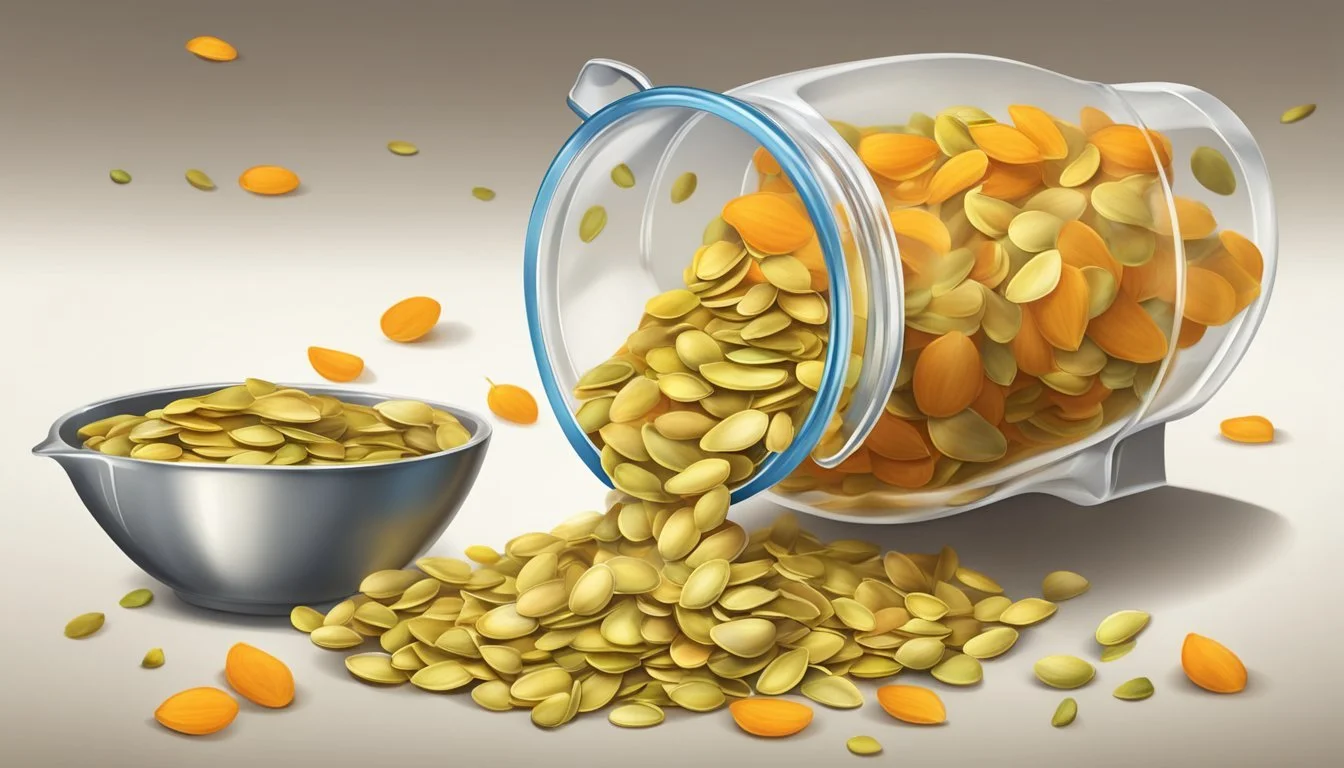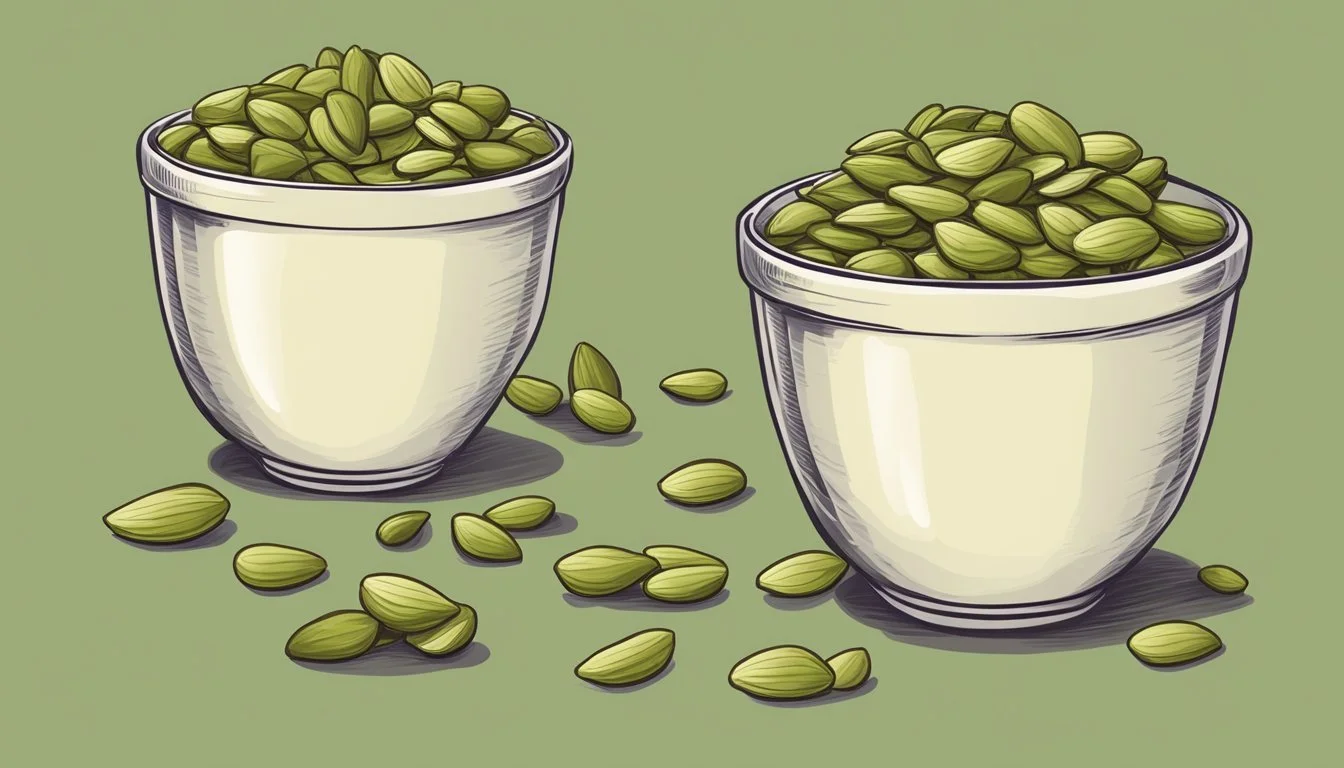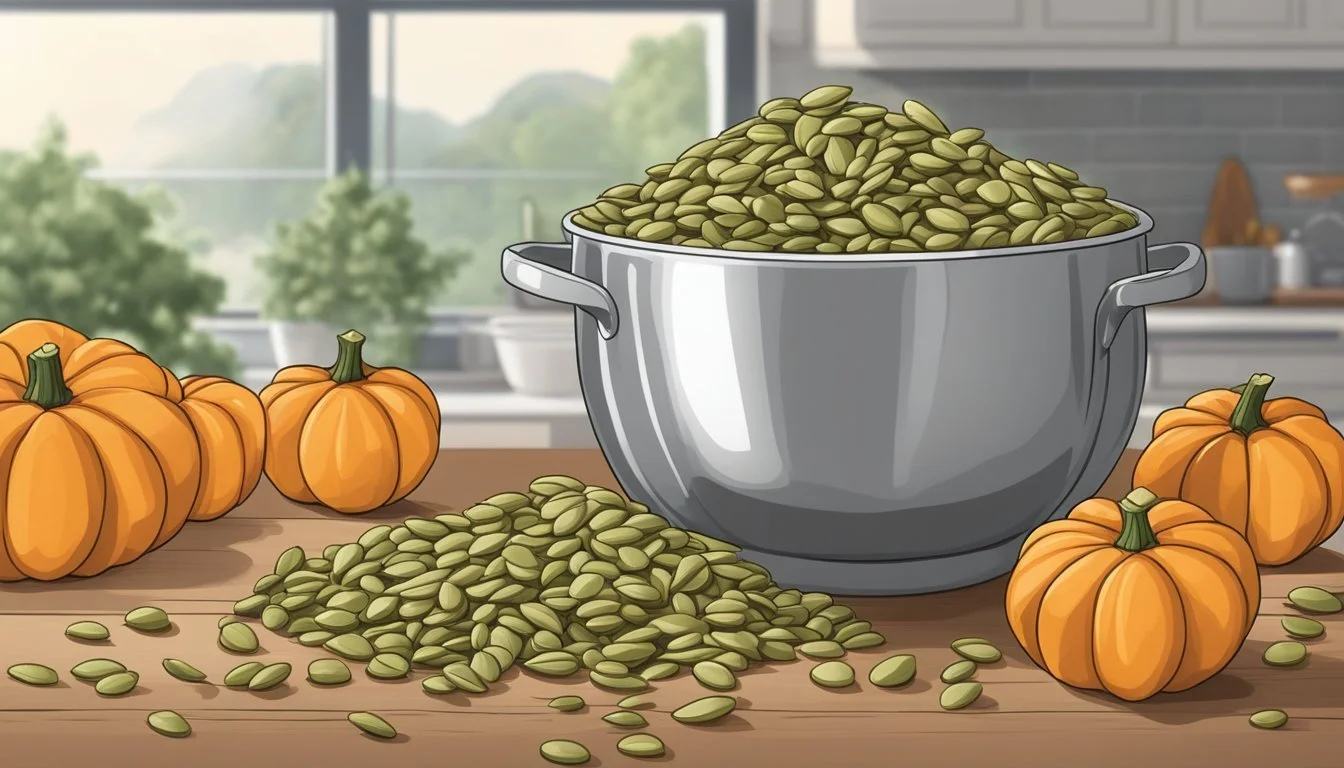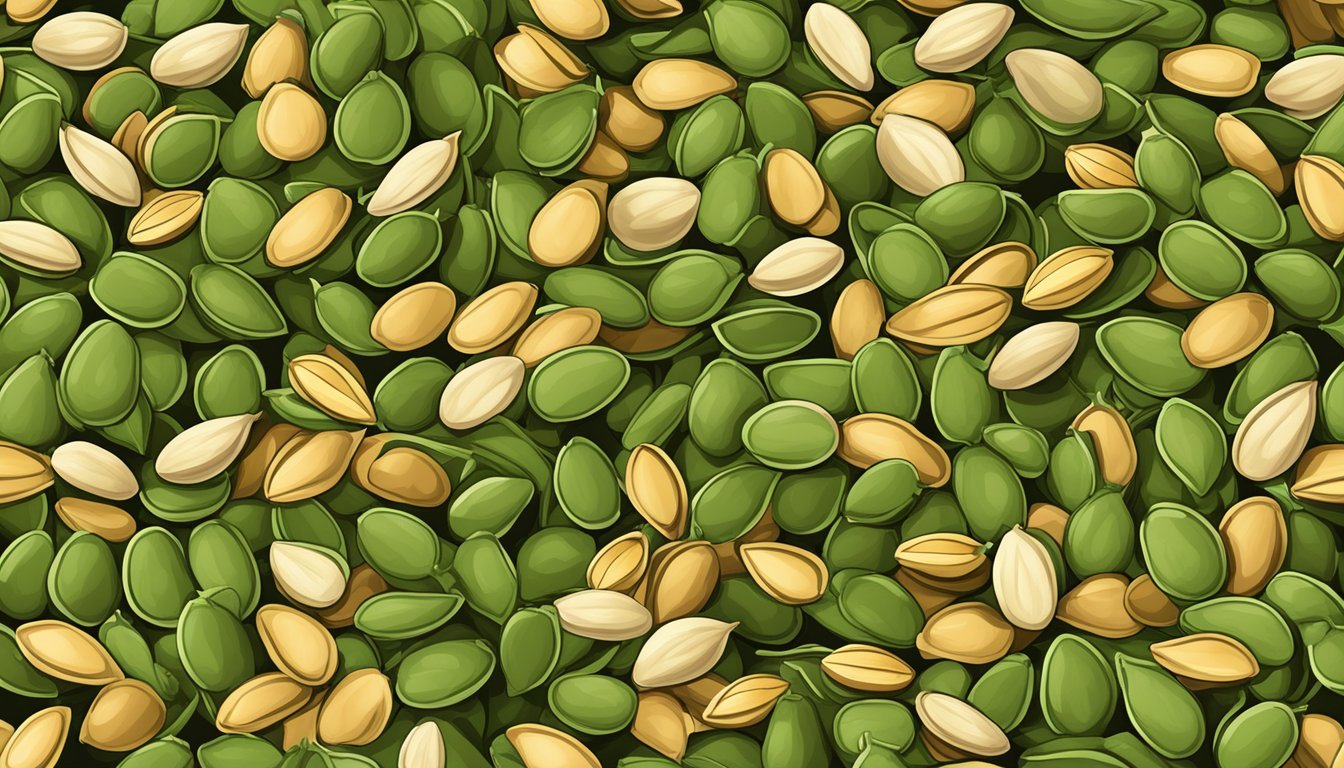How Many Cups in a Pound of Pumpkin Seeds
Accurate Measurement Guide
Determining the volume of pumpkin seeds in cups when given their weight in pounds is a common task in cooking and baking. Pumpkin seeds, also referred to as pepitas, are often used in recipes that require precise measurements for quality results. A pound of pumpkin seeds roughly translates to a measured quantity within the range of 2.75 to 3.81 cups. This conversion can slightly vary depending on the seed's size and how they are prepared or processed before measurement.
Cooking enthusiasts and professionals alike require accurate conversions when dealing with ingredients. Having a standard reference helps in ensuring consistency in recipes. When it comes to pumpkin seeds, it's understood that they are typically less dense than water, which is why a pound of them occupies more volume, measured in cups. The variation in volume is a consequence of the space that exists between the seeds when placed in a measuring cup, and this is why a specific range is often provided rather than an exact figure.
Understanding Pumpkin Seeds
Pumpkin seeds, which vary in size and weight, are a dense source of nutrients. They are consumed either dry or roasted and are known for their significant protein, vitamin, and mineral content.
Varieties and Characteristics
Pumpkin seeds come from the fruit of various pumpkin varieties. The seeds' size and weight can differ based on the pumpkin species and the growing conditions. While an average pumpkin might yield 200 to 500 seeds, certain varieties could produce up to 1,500 seeds. The seeds are enclosed in a husk that can be removed before consumption.
Nutritional Profile
Pumpkin seeds are highly valued for their nutritional benefits. They offer a rich source of protein, fiber, and healthy fats. A single ounce of pumpkin seeds can contain approximately 7 grams of protein, 1.7 grams of fiber, and 13 grams of fat, largely unsaturated. In terms of vitamins and minerals, they provide significant amounts of magnesium, zinc, and iron, contributing to various health benefits. Despite their high fat content, they are considered a low-calorie snack, with approximately 158 calories per ounce when roasted and unsalted.
Cups to Pounds Conversion
In the context of converting between cups and pounds of pumpkin seeds, one pound equates to approximately 3.81 US cups. This section breaks down the conversion process into factors, techniques, and methods to ensure accurate measurements.
Conversion Factors
The conversion rate from pounds to cups for pumpkin seeds is determined by their density. Typically, one pound of pumpkin seeds is equal to 3.81 US cups. This standard is based on the average density of pumpkin seeds, which is necessary for converting weight to volume.
Weight (Pounds) Volume (Cups) 1 3.81 2 7.62
Measuring Techniques
Accurate measurement involves more than just a simple numeric conversion. When measuring pumpkin seeds, a kitchen scale guarantees precision in weight, while standard measuring cups are used to assess volume. It's essential to fill the measuring cup to the brim to ensure an accurate measurement.
Use digital scale: for precise weight measurement.
Level the cups: to ensure the correct volume is measured.
Estimation Methods
For instances where precision tools are unavailable, estimation methods can be applied. One can base their estimates on the known average conversion rate and adjust for any visible excess or shortfall in portion sizes. However, this method should be a last resort, as it introduces a margin of error.
Visual approximation: of the volume when portioning seeds.
Consistent measuring tools: such as cups or containers marked with volume, to maintain consistency in portion sizes.
Using Pumpkin Seeds in Recipes
Pumpkin seeds, also known as pepitas, are a versatile ingredient that chefs value for their nutty flavor and crunchy texture. Used in various recipes, from snacks to salads, understanding the correct measurements and adjustments is crucial to culinary success.
Common Recipes
Roasting: Fresh pumpkin seeds can be roasted with a pat of butter or oil and seasoned to taste. The typical method involves spreading them in a single layer on a baking sheet and baking at a moderate temperature, stirring occasionally.
Salads: Roasted pumpkin seeds add a crunchy element to salads. They are often sprinkled on top just before serving to maintain their texture.
Soups: Chefs may garnish soups with a handful of seeds for a contrasting texture to the creamy base of soups like pumpkin or squash.
Side Dishes: Toasted seeds can complement side dishes, providing an additional layer of flavor and texture.
Pie: For a twist, some bakers incorporate roasted seeds into or on top of pumpkin pies for a crunchy contrast to the smooth filling.
Recipe Adjustments
Measurement Equivalents: When a recipe calls for pumpkin seeds, it is important to understand the equivalents. A pound of pumpkin seeds roughly translates to 4 cups.
Substitutions: In recipes, pumpkin seeds may be substituted with similar nuts or seeds, such as sunflower seeds, based on availability and flavor preference. The outcome might vary slightly, but they generally provide a similar textural contribution to dishes.
Freshness: Fresh pumpkin seeds are preferred in recipes for their moisture and natural oils, which yield better texture and flavor upon roasting compared to pre-packaged seeds.
Allowances in Recipes: Recipes can often accommodate an increase or decrease in the amount of pumpkin seeds used without drastically impacting the final dish, giving chefs some flexibility to adjust to taste or to the amount available.
Seasonal and Cultural Significance
Pumpkin seeds, harvested mainly from the winter squash varieties, are deeply ingrained in cultural practices and seasonal events, particularly in relation to Halloween and the winter months where produce like sweet potatoes and various squashes are prominent.
Halloween and Festivities
During Halloween, pumpkin seeds are often retrieved and roasted from the pumpkins carved into jack-o-lanterns, a staple activity of the holiday. The practice not only utilizes the entirety of the pumpkin but also connects families and communities through shared traditions. Pumpkins and their seeds take center stage in Halloween celebrations, reflecting the fruit's historical significance and its relationship with the frosty fall season.
Winter Squash Varieties
In the winter, a host of squash varieties such as butternut squash, acorn squash, hubbard squash, and buttercup squash become prevalent. These squashes serve as important ingredients in seasonal dishes, where their seeds can be roasted and enjoyed as a nutritious snack. Given their hardiness, these squash varieties store well through the chill, providing a sweet and robust flavor that is irreplaceable in winter cuisine. Pumpkin seeds harvested from these varieties echo the robustness and richness of winter's harvest.
Health and Dietary Considerations
When considering the inclusion of pumpkin seeds in a diet, it is essential to understand their nutritional content and how they may affect dietary restrictions.
Benefits of Pumpkin Seeds
Pumpkin seeds are a rich source of several nutrients that contribute to health benefits. They provide a substantial amount of protein, which is vital for muscle repair and growth. The seeds are also high in magnesium, a mineral that supports numerous biochemical reactions in the body. Additionally, pumpkin seeds contain zinc, which is crucial for immune function and skin health. A notable amount of dietary fiber can be found in pumpkin seeds; this may aid in preventing constipation and promoting a healthy digestive system. Here's a quick overview of their nutritional content per 1-ounce serving:
Calories: Approximately 126
Protein: Around 7 grams
Magnesium: 150 milligrams (37% of the Daily Value)
Zinc: 2.52 milligrams (23% of the Daily Value)
Fiber: Roughly 1.7 grams
Moreover, the seeds have unsaturated fats, which are considered beneficial for heart health. However, for individuals monitoring caloric intake, it's important to consume them in moderation since they are calorie-dense.
Dietary Restrictions
When integrating pumpkin seeds into a diet, one must take into account any dietary restrictions. For individuals on a low-sodium diet, unsalted pumpkin seeds are a better choice as they naturally contain no sodium. Those who opt for salted pumpkin seeds should be aware that they can contain a significant amount of sodium; for example, there are roughly 2,325 milligrams of sodium in 1 teaspoon of table salt. It's advisable for such individuals to either choose the unsalted varieties or use salt sparingly.
People on calorie-restricted diets should consider the calorie content of pumpkin seeds. Despite their health benefits, the seeds are energy-dense, with a 1-ounce serving containing about 126 calories. Therefore, portion control is key.
Lastly, while the fat in pumpkin seeds is primarily the healthier unsaturated type, those with fat-modified diets should account for this in their consumption. As with all foods, moderation is crucial.
Storage and Preservation
When it comes to preserving pumpkin seeds, maintaining the quality of the seeds over time is crucial. This requires proper storage conditions and methodologies to prevent spoilage and extend shelf life.
Optimal Storage Conditions
For optimal preservation, pumpkin seeds should be stored in cool, dry conditions. It is essential that the seeds are completely dry before storage to minimize the risk of mold or bacterial growth. Once dried:
Refrigerator: Store them in an airtight container in the refrigerator, where they can stay fresh for up to six months.
Freezer: For longer storage, place the seeds in a freezer-safe container and keep them in the freezer, extending their shelf life to up to one year.
Proper drying methods include lying the seeds out in the sun or using an oven set to a low temperature. A dehydrator can also be an effective tool, set at around 115°F (46°C) until the seeds are dry to the touch.
Preventing Spoilage
To prevent spoilage and to ensure pumpkin seeds maintain their quality:
Make sure no water remains on the seeds before storage, as residual moisture can promote bacteria growth.
For an added layer of protection, consider tossing the seeds with a small amount of olive oil. This creates a barrier against moisture and can keep the seeds from going rancid.
Regularly check the stored seeds for any signs of spoilage, including unusual odors or discoloration.
By following these specific measures, one can confidently preserve the integrity and crispness of pumpkin seeds, ensuring they are enjoyable until their next use.
Gardening and Harvesting
Gardening and harvesting pumpkins require specific steps to ensure a successful yield. The process involves careful planting, regular watering, and precise harvesting techniques to collect viable seeds.
Planting and Growth
When cultivating pumpkins, gardeners should start by selecting a planting location with well-draining soil and a lot of sun exposure. Pumpkins thrive in soil with a pH between 6.0 and 6.8, and ample space is necessary for their sprawling vines.
Seed Planting: Sow pumpkin seeds directly into the ground at a depth of 1 inch. If planting in rows, the seeds should be spaced 6 to 12 inches apart. For hill planting, gardeners commonly place 4 to 5 seeds per hill.
Growth Conditions: Plants need plenty of water, especially during fruit development. While young, they are thinned to maintain one plant every 18 to 36 inches to avoid overcrowding.
Nutrient Requirements: Incorporate a generous amount of aged manure or compost into the soil to provide the necessary nutrients for robust growth.
Harvesting Techniques
Harvesting pumpkins is about timing and using the right method to ensure the preservation of the seeds, as well as the fruit itself.
Timing: Pumpkins are usually ready for harvest 95 to 120 days after sowing, once they have reached a deep color, the rinds are hard, and the stems have dried and turned brown.
Method: A sharp knife or pruning shears should be used to cut the stem, leaving a 2-4 inch stub to reduce the risk of rot and to help preserve the fruit.
Following harvesting, seeds can be collected from the fruit for future planting or culinary use. It’s important to peel away the fruit’s flesh and separate the seeds, then rinse and dry them if they are to be stored.









